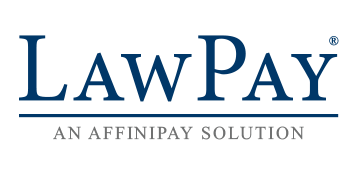
This article originally appeared on the LawPay blog.
Clearly defining all expectations related to fees, billing, and payments during client intake can go a long way toward preventing payment delays and chargebacks.
Here are a few valuable examples of sample legal billing language that can help you reduce late and non-payments and make sure you get paid for your hard work.
Updating Your Attorney Fee Agreement
To be confident that you and your new clients are on the same page from the initial conversation, start by updating your attorney fee agreement to contain discussions of all essential payment-related topics. At a minimum, this includes the following:
Fee Basis
A summary of your firm’s base fees, including descriptions of specific costs associated with referrals, new matters, work performed by others (such as legal assistants and clerks), and appeals. Be sure to clarify when fees will be calculated using a set hourly rate or as a percentage of the amount recovered on behalf of the client.
Expenses
A description of your out-of-pocket expenses for which the client is responsible (e.g., court costs, filing fees, deposition fee, and transcript fees), how those costs will be deducted, and how expenses will be recalculated if there is zero or insufficient recovery of funds on behalf of the client.
Calculation of Attorney’s Fees
An explanation of how your fees will be collected and the factors that will be taken into account, such as expenses paid on behalf of your client and any fees owed to a referring attorney.
Once you’ve made these updates, your next step should be expanding your client intake paperwork to include details about responsibilities related to invoices and payments.
3 Examples of Essential Billing Language for Client Intake Paperwork
 In addition to your fee basis, expenses, and fee calculations, there are a few other topics you should consider covering either in your attorney fee agreement or elsewhere in your client intake paperwork.
In addition to your fee basis, expenses, and fee calculations, there are a few other topics you should consider covering either in your attorney fee agreement or elsewhere in your client intake paperwork.
Attorney’s Billing Obligations
Let your clients know when they can expect invoices and what information will be included on those invoices.
Example:
Attorney will provide Client, at monthly intervals, an itemized statement setting forth in reasonable detail all services by Attorney on behalf of Client, and any costs that have been incurred and/or advanced by Attorney on behalf of Client in the above-referenced matter. The invoice will also show the application of prepaid fees to the monthly invoice and any resulting balances of prepaid fees and/or unpaid fees.
Client’s Payment Obligations
Outline the expectations regarding when the client is required to submit payment and the forms of payment your firm accepts.
Example:
Your legal fees are due and payable [ex: upon receipt of the billing] to be paid no later than [ex: the last day of the month] and may be satisfied with any of the following payment options:
a) By the application of funds held in the firm’s trust account for prepayment of fees, which the firm shall be entitled to transfer upon invoicing
b) By paying by paper check or ACH/eCheck (automated deduction from Client’s designated checking account)
c) By the use of a credit card in person or online via the firm’s payment portal
d) By paying in cash at the offices of the firm
Promise to Pay Provision
A Promise to Pay clause helps guarantee the client understands and agrees to their contractual obligation to pay your firm for the services performed.
Example:
Once services are engaged, Client recognizes that they are contractually bound to Attorney for their entire fee. All fees paid are nonrefundable and must be paid in full. Client understands that fees paid through the use of a debit card, credit card, or other electronic means cannot be revoked or reversed in any manner by the client after legal services are performed. Refunds, when appropriate, shall be paid by check or other electronic funds transfer from Attorney to Client.
———
There are two keys to maximizing your accounts receivable at the end of the year. The first is discussing all expectations related to fees, billing, and payments during client intake. The second is using a secure legal payment solution like LawPay to make it easy for clients to pay. With LawPay, you can offer a convenient payment experience that helps you get paid faster.
Sign up for LawPay by August 30 and pay no monthly fees for 3 months plus a $150 credit. Get started at lawpay.com/basf.
###


